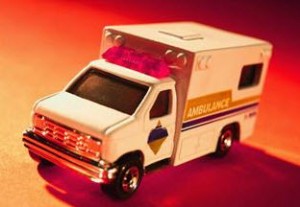 I want to write about an issue that doesn’t directly affect your health, but can impact your life: 911 emergency calls.
I want to write about an issue that doesn’t directly affect your health, but can impact your life: 911 emergency calls.
As an indoor cycling instructor, I need to keep my CPR certification up to date. The last time I renewed my certification, the instructor was a paramedic in a local town here in Massachusetts. During the course, he went into a long explanation of why you should always call 911 from a landline if at all possible, and not your cell phone.
Obviously, if you are out in the middle of nowhere, your cell phone is all you have and it’s a great lifeline to have should you need it! But he explained that the 911 emergency system was built for landlines and not cell phones. When you call 911 from a landline, the call goes straight to the local police or fire dispatcher, the emergency resource closest to your home address. Your address pops up on the screen immediately and they can dispatch assistance even if you are unable to communicate.
With a cell phone, however, the call is not routed locally but is typically routed to the state police. In Oakland California, for example, 911 calls are routed to the California Highway Patrol, which might be ok if you are in your car, but not so good if you are having an emergency in your house!
The state police then have to re-route the call back to the proper local emergency responder. The problem is that if you cannot communicate and tell them where you are, they will determine which police or fire branch to contact based on the cell tower that last picked up your signal. Signals can bounce between towers, especially in urban areas where there are multiple cell towers, so the call for assistance could be sent to the wrong 911 call center
For example, in Cook County Illinois, there are over 100 different 911 call centers, making it highly possible that the call could hit a tower and be routed to a center that is not the closest to your actual location, slowing response time.
The dispatcher has to request your GPS coordinates from the carrier that operates the cell tower, which adds to the response time, and the resulting location is required by the FCC to be within 300 meters of the actual phone location. However, in a city, 300 meters is still a wide area to cover; it would take some time to figure out which apartment building you’re in or which floor you are on. An extra 5-10 minutes may not seem like much, but in a life or death situation, it could mean everything.
When I went to research and double check the information the paramedic shared with us, I found numerous examples of unnecessary deaths due to delayed response times because the 911 call came in from a cell phone and the caller was unable to speak or to articulate clearly their exact location so emergency assistance took longer, in one case over an hour to reach the caller.
Making a 911 call isn’t something most of us think about, and we certainly hope it’s something we’ll never have to do. Having a cell phone can be a lifesaver, as we now have a way to call for help when we are away from home. But when you are in your home, if the need should ever occur, choose your landline over your cell phone if at all possible.
And if you are one of the 20% who has given up landlines in favor or cell phone only connections, consider a medical alert service if you live alone and have an illness or condition that might make an emergency contact necessary. Or consider setting up a contact who could also call 911 on your behalf and confirm your location in an emergency. A friend or neighbor whose number you could program into your cell phone as an auto dial emergency number could be a lifesaver.
To your wellness and health: your true wealth!
Inger
Author: Inger Pols is the Editor of the New England Health Advisory and Author/Creator, Finally Make It Happen, the proven process to get what you want. Get a free special report on The Truth About Sugar: It’s Not All Equal at www.IngerPols.com
Photo Source: Microsoft Clip Art


 Follow me on Twitter
Follow me on Twitter 